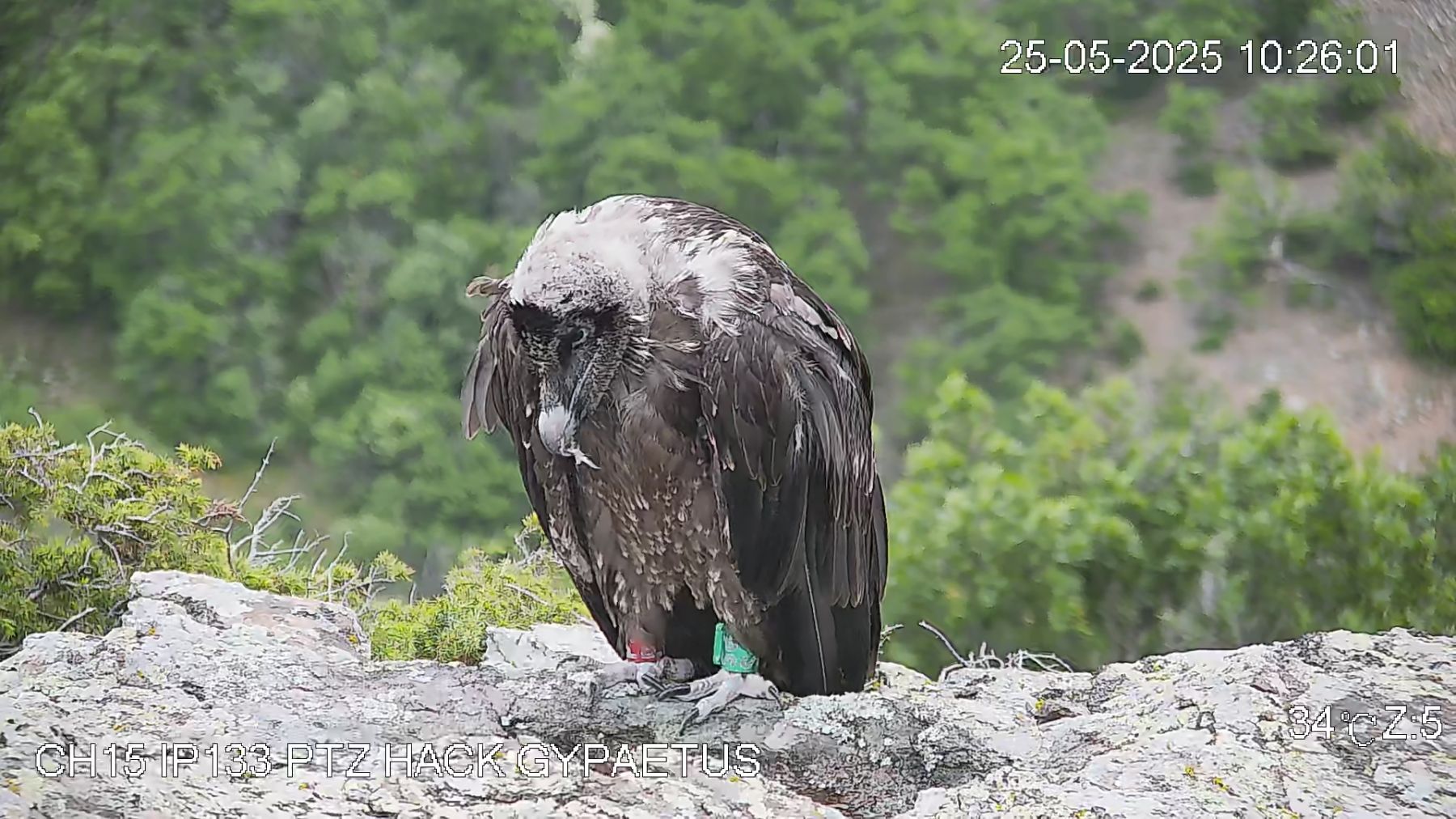
The double clutch of one of the few remaining bearded vulture pairs in Corsica was extracted from a wild nest on the 22nd February by a team from the Parc Naturel Regional de Corse (PNRC) and from the Vulture Conservation Foundation (VCF) – an action that had been agreed by all relevant stakeholders under an emergency action plan to save this declining and extremely small island population from going extinct.
Last year an egg had already been extracted from a pair that for 40 years never produced a fledgling. From this single clutch a chick hatched and was included in the bearded vulture captive breeding network (EEP), securing the genetic information of its parents – and of the Corsican bearded vulture population – for the future.
This year the clutch has been extracted from another pair, which has produced 3 chicks during the last 10 years. Nevertheless, it failed in the last three years, so the PNRC and the VCF decided to remove the clutch to try to clarify the cause of failure while at the same time include the chick in the bearded vulture captive breeding network and save its genetic pool. The final goal is to create a small captive stock including descendants from all potential breeding pairs.
The bearded vulture population of Corsica is the last surviving genetic pool of a former metapopulation including Sicily, Sardinia, Corsica and the Alps. Until last year not a single bird of this originally large population survived in captivity. In the meantime, the species has been reintroduced successfully in the Alps.
During the last 10 years, the bearded vulture population in Corsica has declined rapidly, from 10 pairs to the current 5. The number of fledglings has also been very poor, only 6 chicks fledged since 2007, from a total of 37 clutches.
This situation was mostly caused by 4 main threats:
· Low genetic variability and inbreeding (the mean number of alleles per locus is much lower than in larger historic and recent populations, and also than in other island populations like the historic Sardinian or the recent Crete population)
· Mortality due to anthropomorphic reasons (shooting, poison, lead intoxication, etc.)
· Lack of food resources
· Stochastic demographic events due to very low number of individuals
An expert group that included local, national and international institutions then drafted in 2014-15 an emergency action plan to redress the dramatic decrease and secure the surviving of this unique genetic pool. This year the again the VCF will be involved in two main actions:
· increase in situ the genetic diversity of this population by restocking with birds coming from the captive breeding network
· secure in long term the Corsican genetic information in an ex situ program, including Corsican birds in the Bearded Vulture EEP: create a Corsican genetic reserve.
The collection of the bearded vulture egg that took place in late february is thus one part of this integrated plan to save the species, and is part of an operation that is funded by the Fondation Prince Albert II de Monaco.
The 1st egg has similar weight with the one from last year (177g), but the 2nd is much smaller with only 148g. We hope that a chick will hatch from these clutches and we could include it in Corsican genetic reserve.
Photos: Théo Mazanet (VCF) & Franck Finelli (PNRC)



